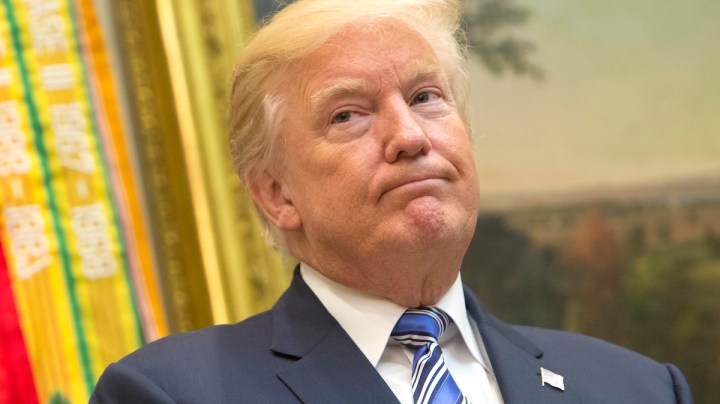Trump’s Executive Order to End Family Separation Isn’t a Victory

U.S. President Donald J. Trump listens during a Department of Veterans Affairs announcement. Photo by Chris Kleponis-Pool/Getty Images News
After weeks of his administration ripping children away from their parents at the border – and incorrectly blaming the policy on Democrats – President Donald Trump has signed an executive order intended to end family separation. However, it is not a victory. The mistreatment of immigrants is hardly over. The executive order does not address the fate of the more than 2,000 kids already separated from their moms and dads. It also doesn’t stop end the “zero-tolerance” policy, as the administration still intends to criminally prosecute anyone – including asylum seekers – who enters the country without documentation. And it seeks indefinite detention, which goes against the 1997 Flores settlement.
The Trump Administration has blamed the Flores settlement as the reason for splitting parents and children at the border. Currently, under Flores v. Reno, the government must “place each detained minor in the least restrictive setting appropriate,” meaning it has to release children “accompanied” by parents within 20 days, according to Vox.
In 1985, the American Civil Liberties Union (ACLU) filed a lawsuit over the treatment of 15-year-old Salvadoran Jenny Lisette Flores. She arrived in the United States looking for an aunt who lived in the country, but agents detained and housed her in a center – where she was regularly strip-searched – with men and women that she had no connections to. While the case reached the Supreme Court in 1993 and the justices generally agreed with the government, a 1997 decree set a precedent for how immigration authorities should treat unaccompanied minors.
With immigration officials failing to obey the guidelines outlined in Flores, the decree has developed into a set of concrete guidelines, though they generally applied to unaccompanied minors. With former President Barack Obama keeping families in detention and attempting to move them through the immigration system quickly, immigration advocates argued the government’s actions contradicted the Flores settlement. Eventually, the Ninth circuit extended the protections to even children who came with their parents and stated they cannot remain in detention for more than 20 days.
Even though the Flores agreement doesn’t explicitly cover parents, the government has released the entire family after the set period of time. But the Trump Administration seeks to change the Flores settlement, which could allow for the indefinite detention of families. So instead of images of children in cages, we’ll see families behind bars for long periods of time.